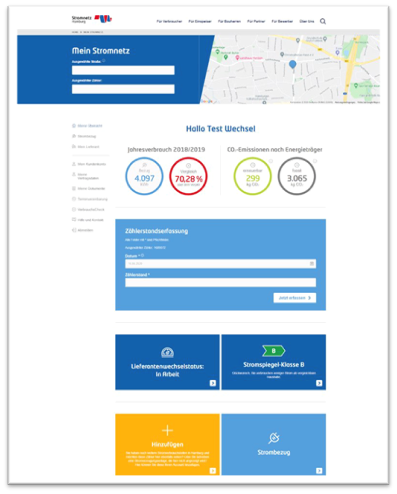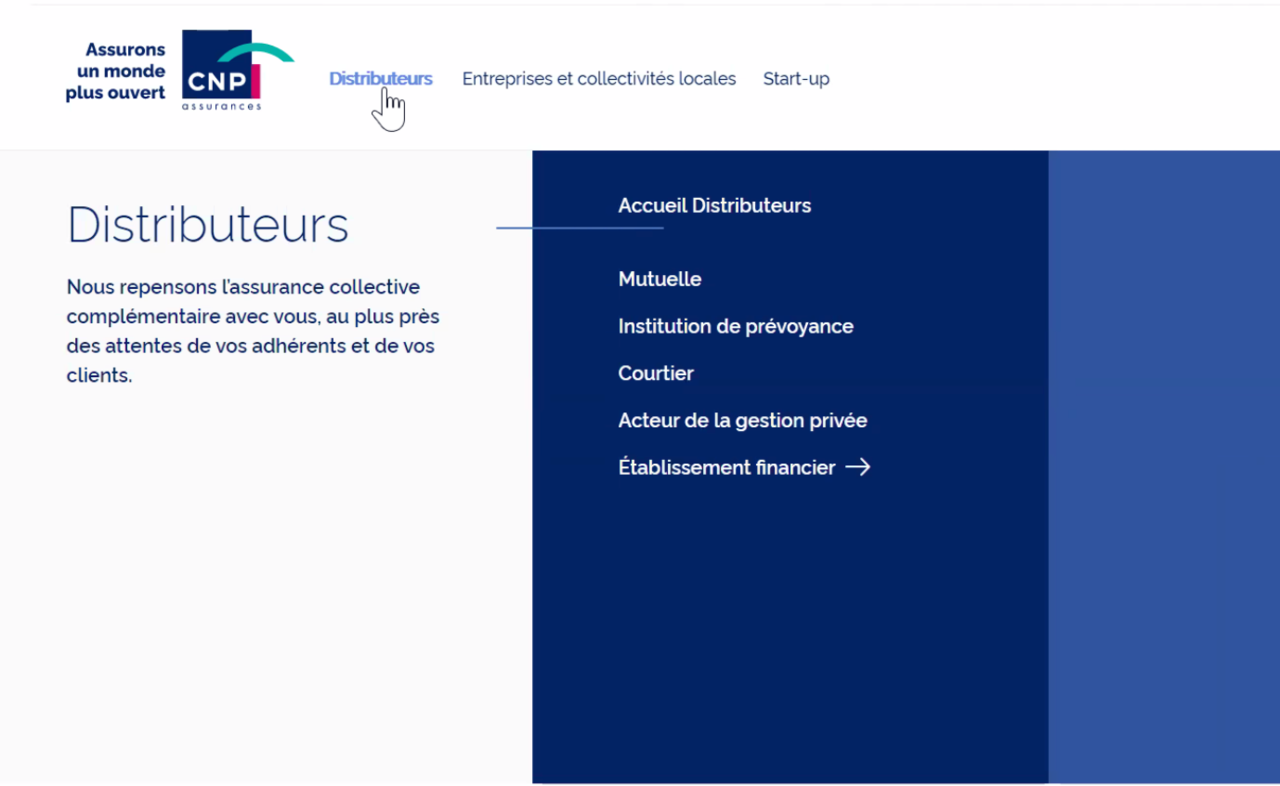The Return of the B2B Portal - Facilitating Powerful Self-Serve Experiences

Portals have been around as long as the internet itself. After a brief period in which they fell out of favor, B2B portals are back. Today, they play a key role in many businesses’ digital transformations. In this post, we’ll explore the reasons behind that resurgence.
Digital self-service - the B2B portal strikes back
Recently, portals are regularly mentioned in any conversation concerning the digitalization of B2B companies. Though many people considered them a relic of the past, they’ve demonstrated their value time and time again and form an important part of many B2B businesses’ digital sales strategies. But why are companies now re-discovering portals and what’s driving this renewed interest?
The first thing to note is that portal is a general term that has a wide reach. Modern portals may have the same basic function as earlier versions, but there are substantial differences.
A portal, unlike a website, collects information and services from other systems and sources. Authorized users can then access this information via a single interface. Effectively, portals gather everything customers need in one place. This much hasn’t changed.
It’s when you dive a little deeper and go into specifics that the evolution that has taken place becomes more apparent. There are many types of portals, especially in B2B commerce, where there is greater complexity and more personas involved. So let’s take a look at a few illuminating case studies.
Customer Portals
Customer portals are a self-service tool that allows a business’s customers to access a range of services themselves, without the need to liaise with an operator or a representative. Customers can connect to the portal at any time, from any location. This type of portal is extremely valuable to brands, both in B2B and B2C contexts. Why? Because they significantly improve the customer experience and reduce operational costs.
Take Stromnetz Hamburg as an example. Both business customers and individual consumers can now connect to the company’s self-serve portal. From there, they can access everything related to their Hamburg electricity account. They can make payments, view a dashboard that shows their consumption levels, manage their power production if they’re supplying the grid, check their carbon footprint and much, much more.
In summary, customers can access a wide range of services that draw information from a diverse array of business systems. The beauty of the portal is that it connects all those systems and sources, and displays the information in one place. And it’s all been built with Ibexa Experience.
You may be asking why this matters or how they differ from previous incarnations of the B2B online portal. The key is the way these portals are used. Unlike in the past, they’re now one of the most powerful tools businesses have for building stronger relationships between brands and their customers.
Back in the day, portals were pretty feature-light. You could download a duplicate of your last invoice or change your payment information, but that’s about it. Most of the time you still had to deal with things manually, in the offline world. Today, it’s the opposite. If you go to a physical office – where they still exist – the staff will most likely redirect you to a portal.
So the idea of a B2B customer portal is not new, but the way they’re being used and the general perception of what they’re for has changed radically. Self-service customer portals are now a unique opportunity to both improve the customer experience and drastically reduce operational costs.
Partner portals
Partner portals are extremely common in B2B. In B2B commerce, there are typically more actors to factor into the equation. It’s not just the vendor and customer. There are partners that install products, brokers that sell services, distributors who introduce products into new territories, and agents that represent brands in those new markets.
Let’s look at another case study. CNP, a French insurance company, wanted to establish a portal for its partners. These partners were responsible for selling CNP insurance policies to the wider public. The portal was designed to be a place where these insurance brokers could retrieve pricing and collateral information, as well as documentation on specific policies. It also allows them to register their sales and pipeline. In this case, the portal acts as a sales enablement solution for the partners that constitute CNP’s external sales team
The CNP portal has proven invaluable in helping the brokers become both more effective and more productive. And, just as in the case of the Customer portal, the portal kills two birds with one stone. First, it delivers on brokers’ expectations. In an increasingly digital world, employees no longer want to use the phone and speak to a rep every time they need something. This makes CNP a very attractive insurer to represent. Second, self-service digitalizes many of CNP’s key operations, reducing the cost of running this network of brokers.
For many businesses, partner relationships are as important as the relationships they have with end customers. Though partner portals were once a tool that was largely ignored and forgotten, they’re now a valuable strategic asset.
Workforce portals
Workforce portals have followed a similar trajectory. Historically, they would have been called intranets, but that term is no longer in vogue. Where once they were relatively crude and basic, now they’re another important facet of an organization’s digital experience platform.
BSM is owned by the City Council of Barcelona and was established to unify all of the city’s municipal services under a single entity. It wanted to develop a digital workplace that allowed municipal employees to work remotely. It envisioned a solution that enabled users from every business unit to access a personalized digital space and that empowered them to collaborate more effectively. It would also act as a means of accessing documents and information and relevant business applications, as well as allowing employees to connect to the workplace from any device, at any time.
The BSM workplace portal was successfully implemented and is now a powerful self-service tool that offers employees a more flexible, productive and practical means of working. This also has a knock-on effect on customer experience. After all, more productive and flexible employees mean a better service for the customer. Just like the previous customer and partner portals case studies, this workplace portal also automated key operations, reducing operational costs.
Of course, there are many other types of portals available to businesses. Supplier Portals and Procurement Portals are just two that spring to mind. As digitalization of business operations becomes increasingly imperative, portals are an opportunity to improve your business’s services, while also automating key processes and making significant cost savings.
Portals without a “portal experience ”
We believe the case studies above demonstrate that today’s portals deliver a far superior user experience to those portals that came before.
Older portals often suffered from design, navigation and compatibility issues. Largely because the user experience was never a primary focus. Modern portals prioritize a seamless, frictionless and intuitive user experience that draws information from a wide range of sources across a business’s entire operations. This ability to easily integrate with a diverse array of systems also distinguishes modern portals from older versions.
At Ibexa, we’ve helped our partners build portals for their customers, partners and workforces for years. As a truly horizontal digital platform, we’ve empowered businesses to create solutions that represent a core pillar of their digital transformation journey.
The value of our technology, as with any DXP, increases when it is used to facilitate several projects. By using Ibexa DXP to build customer, workforce and partner portals for your business, you’ll significantly increase your return on investment, while also improving the user experience for all parties that interact with your organization.
If you wish to better understand how we can help you approach, build and deliver your self-service portals, please reach out to one of our consultants.
Considerations for Creating Rich Customer Experiences
DXP eBook
If you are struggling with your B2B digital transformation efforts, why not reach out to us to discuss your project. Feel free to download and read Ibexa's eBook on Digital Experience Platforms and the four considerations for creating exceptional customer experiences.




